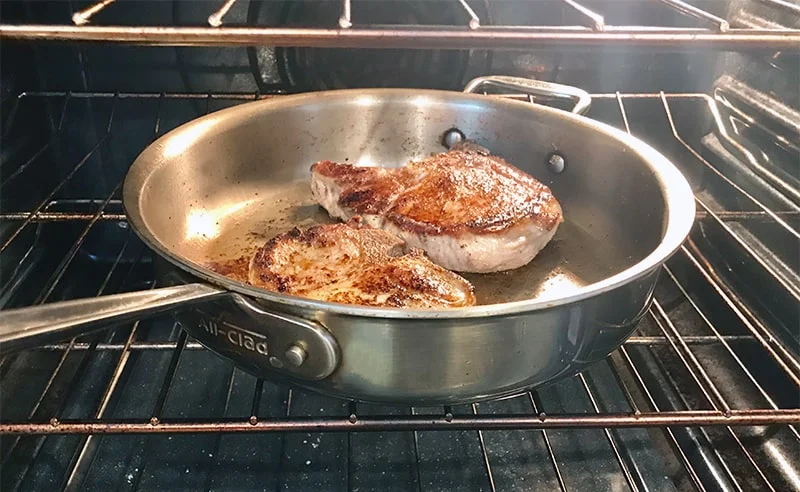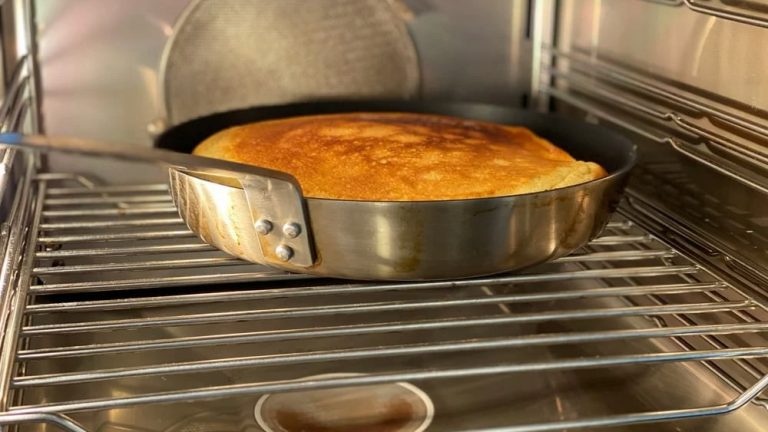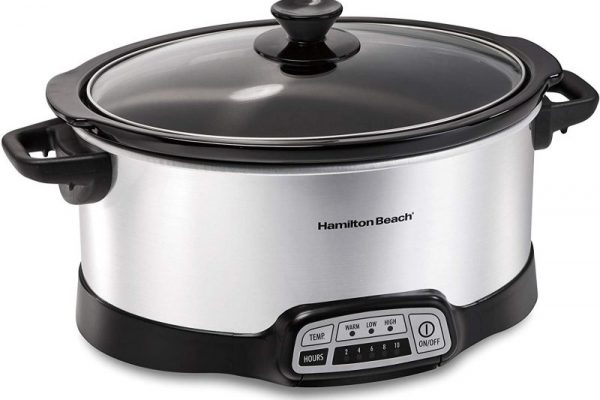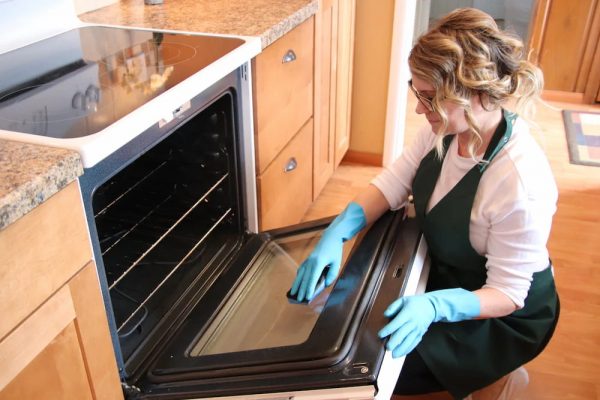Your meals and cookware can go from good to outstanding by using an oven-safe pan. You no longer have to feel limited to just your stovetop when cooking with Stainless Clad because you can oven-finish dishes.
It is important to consider whether stainless steel cookware can be used in the oven because it is one of the most popular options for both home and professional chefs. The short answer is yes. However, not all stainless steel cookware is created equal, so it’s critical to learn more about your cookware before putting it in the oven at high heat.
Can Stainless Steel Go in the Oven? The simple answer is that stainless steel is safe to use in the oven. But you must choose stainless steel of grades 304 or 400. Additionally, it shouldn’t have any handles made of wood or plastic.
Please continue reading the post after this one to see more details.
Table of Contents
- Is Stainless Steel Oven Friendly?
- How To Use Stainless Steel In Oven Safely?
- Pros Of Using Stainless Steel In The Oven
- Cons Of Using Stainless Steel In Oven
- Which Material Bakes Better: Stainless Steel Or Aluminum?
- What Happens When A Pan Is Placed In The Oven?
- Ways To Clean Burnt Oil Off Of Your Stainless Steel Frying Pan
- Related Questions
- Final Words
Is Stainless Steel Oven Friendly?
Due to the elements it contains, stainless steel is regarded as an alloy and has a high melting point, making it oven-safe. It’s crucial to buy premium clad stainless steel cookware if you intend to use your stainless steel pans in the oven. This is due to the fact that stainless steel of lower quality is frequently not oven-safe.
When looking for high-quality, oven-safe stainless steel cookware, opt for pieces made of 18/10 stainless steel and 304 or 400 grade stainless steel for the best oven performance.
Aluminum-based pans must be avoided because they cannot withstand the intense heat in the oven. Avoid using stainless steel cookware with wooden or plastic handles as well, even if the pan is made of 304 or 400 grade stainless steel, as these materials cannot withstand heat in an oven.
Advantages of Oven-Safe Pans
The importance of having high-quality cookware that is both versatile and durable is understood by both seasoned home cooks and professional chefs. One of the many benefits of having high quality cookware, among many others, is the ability to cook with stainless pans in the oven.
- Oven Finish: Many recipes advise beginning a dish on the stove and baking it in the oven to finish it. The ideal answer is stainless steel cookware that is oven-safe.
- Even Baking: When baking in an oven, even heat distribution is essential. Pans made of stainless steel ensure completely even heating as well as quick heat absorption.
- Long Lasting: Your premium stainless steel pans will last up to ten years or longer if kept in good condition because stainless steel is highly resistant to corrosion, temperature changes, and scratches.
- Easy to Clean: We all enjoy how high-quality pots and pans like our Stainless Clad clean up even burnt-on messes quickly and easily.
How To Use Stainless Steel In Oven Safely?
As you can see, stainless steel has a very high melting point (between 320 and 410 degrees Fahrenheit) compared to other materials like plastic. Nevertheless, there are a few more things to think about before using your stainless steel cookware in the oven.
After all, a cooking disaster is the last thing you would want to happen. Or, even worse, your dish may contain poisonous chemicals. So, to avoid that follow these instructions:
Check The Handle
Even though stainless steel has a great melting point, some components of your cookware might not. For instance, the handles on most stainless steel cookware present issues.
The majority of stainless steel cookware may have a plastic or wooden handle. So, as we previously observed, both wood and plastic have a low melting point. Therefore, if you keep your stainless steel pan with a plastic or wood handle, it could end up melting and ruining not only the pricey cookware but also your dish.
Thus, always verify that the handle is oven-safe before putting your stainless steel mixing bowl or dutch oven in the oven.
The use of stainless steel with a plastic handle is permitted provided that the oven temperature is kept below 350 degrees Fahrenheit. Keep the temperature for a silicone handle below 400 degrees Fahrenheit similarly.
Take Care Of The Quality
The quality of stainless steel is another thing you need to be on the lookout for. Notice how much of a difference its metal composition makes in this situation.
So, whenever you’re buying a new stainless steel bowl, there are two things you should look for:
Stainless Steel Grade
The stainless steel grade also discusses its strength, resistance to heat, and quality. There are various grades of stainless steel, as was mentioned above in the table. Not all, though, are designed for the oven.
For instance, grades 304 and 430 have high melting points and are perfect for oven cooking. Grade 316 won’t be nearly as good, on the other hand, as it has a slightly lower melting point than the other grades.
Furthermore, when compared to 316, stainless steel grades 304 and 430 are both less expensive. So, that’s another huge benefit.
Stainless Steel Quality
Although the stainless steel grade discusses the general quality, it is insufficient to evaluate the quality or type of metals used in the cookware. Thus, you must exercise caution if you purchase a stainless steel pan from an arbitrary vendor.
Fortunately, there are a few ways to determine whether your stainless steel pan is of high quality or not. If it has a clear silver finish or a slightly greenish finish, for example, you can check its color or use a magnet to test it.
Avoid using your stainless steel cookware in the oven if you believe it to be of low quality. Heat can cause cheap and toxic materials to be released into your food.
Wrap A Kitchen Towel Around The Handle
Many bakers and chefs use stainless steel pans with metal or steel handles. The cookware will occasionally be very hot when you remove it from the oven, so that explains it. This method may therefore be useful to prevent burns.
Simply wrap the handles of the cookware in a thick, heat-resistant kitchen towel, and keep it in the oven. Simply hold the handle that has been wrapped in a towel when using it to ensure safety.

Don’t Go Above 500 Degrees Fahrenheit
Even though stainless steel can withstand very high temperatures, it’s best to keep temperatures below 500 degrees Fahrenheit.
If you subject a stainless steel pan to extremely high temperatures instead, it might start dispersing heat unevenly.
Keep An Eye On The Oven
It should go without saying, but if you recently purchased new stainless steel cookware, keep an eye on it while keeping it in the oven.
If it’s unintentionally of poor quality, putting it in the oven for an extended period of time could cause damage. If you’re using a stainless steel pan in the oven for the first time, try to remain cautious.
Cooking with silicone pans is one of the most amazing things you can do. All of your favorite baked goods will bake evenly because they are non-stick, flexible, and simple to clean. So, can you put silicone in the oven?
Pros Of Using Stainless Steel In The Oven
In both residential and commercial kitchens, stainless steel cookware has been a mainstay for a while. They are frequently preferred when it comes to kitchen cookware, and with good reason.
The top benefits of using stainless steel in the oven over other types of cookware are listed below!
Long-lasting
Stainless steel cookware can last for decades, or more, if used and maintained properly. Forget about minor kitchen mishaps causing it to scratch, chip, or break.
Rust and corrosion cannot penetrate high-quality stainless steel, which can withstand normal wear and tear.
Even Cooking
Multi-ply stainless steel cookware is a fantastic option for use in the oven due to its quick heat absorption and even heat distribution.
The layers of stainless steel and aluminum produce a more homogenous cooking surface that will heat up evenly from the bottom and sides of the pan.
Naturally Non-reactive
Compared to other cookware materials such as aluminum, copper, cast iron, and Teflon, stainless steel is naturally non-reactive and will not interfere with the chemical structure of your food.
Whatever you bake will not impart a metallic flavor to your food or leach any harmful chemicals.
Low-maintenance
Stainless steel is extremely low maintenance and easy to clean.
You can easily soak the pan in the sink (which you could never do with cast iron) and scrub it clean with a mild soap if you have a baking accident and have burnt food residue stuck to the bottom of the pan.
For messes that won’t go away, you can also use specialized cleaners and polishes.
Cons Of Using Stainless Steel In Oven
There are a few restrictions you should be aware of even though using a stainless steel bowl or pan in the oven has many advantages. These include:
Food May Stick
If your bakeware and equipment don’t have a nonstick surface, food sticking to them will always be a major issue whenever you bake anything with any kind of utensil. However, since stainless steel cookware is not nonstick, it seems to get worse if you use it. As a result, you must do everything in this situation carefully.
Try to use proper non-stick techniques, such as using parchment paper and lubricating the utensil with butter or oil, for instance., to prevent the food from sticking.
Discoloration Issues
Remember that stainless steel is non-reactive and has a high melting point. However, stainless steel may discolor if exposed to temperatures that are very high. Now, unless you want to maintain the overall aesthetics, this won’t be a big problem.
See more about Can You Put Glass In An Oven?
Which Material Bakes Better: Stainless Steel Or Aluminum?
One of the most popular materials for oven-safe cookware is aluminum, which is used frequently for baking. However, many people are now switching to stainless steel cookware. Which one is superior and why? Let’s understand the differences between these two for a better idea:
Heat Retention
One of the key differences between aluminum and stainless steel is heat retention. It’s also very important in baking, to add to that.
Keep in mind that cookware made of aluminum and stainless steel has excellent heat distribution. In contrast to aluminum, stainless steel holds onto heat for a longer period of time. Additionally, aluminum heats up very quickly while stainless steel takes longer.
So it’s best to use aluminum cookware for baking if you’re pressed for time.
Oven Safety
The oven is safe for both stainless steel and aluminum. However, aluminum can withstand temperatures of up to 450 degrees Fahrenheit while stainless steel can withstand temperatures of up to 500 degrees Fahrenheit.
Weight
Despite not being as heavy as cast iron skillets, stainless steel pans and skillets are still quite heavy. In comparison to aluminum pans, they are heavier. Furthermore, it is also true that aluminum weighs only one-third as much as stainless steel.
Because of this, aluminum is typically lightweight and convenient to transport.
Health Concerns
The fact that stainless steel is non-toxic is one of its main advantages over aluminum. Furthermore, because it is inert, it won’t react with any kind of food.
However, aluminum is occasionally regarded as dangerous and can react with acidic foods.
Cost
Cookware made of stainless steel is generally more durable but also more expensive. In contrast, stainless steel is more durable and less expensive than aluminum.
Cleaning And Maintenance
The majority of the time, stainless steel is dishwasher safe and easier to clean. However, aluminum usually can’t be put in the dishwasher and takes more work to clean.

What Happens When A Pan Is Placed In The Oven?
Whether your pan is oven-safe will determine the answer.
It’s very likely that your frying pan will get damaged and your food will turn out to be inedible if you use an oven-unsafe frying pan in the oven. Melted coatings or handles represent the most frequent type of damage in this scenario.
Food in an oven-safe frying pan will bake if you place it in the oven. Cast iron or stainless steel are frequently used for oven-safe pans, and these pans frequently have metal or bare steel handles. When you remove the pan from the oven, be careful of the heat on the handle.
When using frying pans on the stovetop and in the oven, chefs in the industry encircle the handles with kitchen towels. Copy/paste this procedure in your home kitchen, and whenever you remove a pan from the oven, hold the handle with a kitchen towel. So you won’t get burned.
Ways To Clean Burnt Oil Off Of Your Stainless Steel Frying Pan
It’s also possible that food residue or cooking oil will burn on your frying pan’s surface when you use it in the oven. You will therefore need to do additional cleaning after cooking in order to make your pan spotless once more.
Here are three quick and effective ways to remove burnt food particles or cooking oil from your stainless steel frying pan right away.
Boil Water And Dish Soap For 5 Minutes
In your frying pan, add some dish soap and tap water. On your cooktop, heat the cleaning solution to a gentle boil over medium-high heat. Allow to boil for about five minutes, then let it cool. Try using dish soap and a soft sponge to scrub the burns off of your stainless steel frying pan.
Use Sea Salt
To cover the burnt portions of the cooking surface in your stainless steel frying pan, add enough water. It should be heated to a rolling boil. Three tablespoons of sea salt crystals should be added to the boiling water after it has boiled for one or two minutes. Then, the heat should be turned off.
For about two hours, let the pan cool and rest in the salty water. Once that is done, drain the water from your frying pan and scrub the burns and stains away with soapy water and a soft sponge.
Use Baking Soda
1 part baking soda and 1 part water are combined to make a cleaning paste. Apply the paste to the cooking surface where there are burns or stains, and leave on for about two hours.
Once the time has passed, manually remove the stains and burns using a soft sponge and soapy water.
Related Questions
Now that we’ve covered all about stainless steel cookware, whether it can go in the oven, and tips on how to use it to prolong its life and maintain its quality, here are a few additional questions we thought you might have:
Is Stainless Steel Microwaveable?
The majority of us are already aware that metals and microwaves do not mix well. How about stainless steel, though? Well, stainless steel is also a type of metal and must not be used in a microwave.
Like other metals, stainless steel reflects microwaves; as a result of this microwave radiation is blocked and the food cannot be heated properly.
Stainless steel cookware should not be placed in the microwave for additional reasons.
Arcing, which results in sparks and crackles inside the microwave, can happen if the stainless steel comes into contact with the interior walls of the appliance.
This can be a serious fire hazard and can cause the cover on the microwave oven walls to burn down and seriously damage it.
The fact that not all stainless-steel cookware can ignite a fire in your microwave is very important to remember. When heating, if it stays away from the microwave wall and the reflection surface is smooth enough, it might not result in such negative effects.
Although there is a chance that using stainless steel in your microwave will harm the appliance, we advise against taking that chance and never using stainless steel in a microwave.
Is Stainless Steel Dishwasher-safe?
The short answer is: yes, stainless steel is dishwasher-safe and can easily be cleaned in one. The long answer is that there are some risks even though stainless steel is typically thought to be dishwasher-safe.
A lot of people wash their stainless steel pots and pans in the dishwasher and have no problems with the results. On occasion, though, they do pick up blemishes and watermarks that might be challenging to remove.
Dishwasher detergent is considered to be extremely harsh with continuous use causing spotting and discoloration.
You should only put stainless steel pots and pans in the dishwasher if they specifically say so because they have been verified to be dishwasher-safe.
To avoid any damage, it is best to continue handwashing and drying other items right away.
Are There Any Drawbacks To Stainless Steel Use?
You do realize that nothing is perfect? While investing in high-quality stainless steel cookware can be a wise move for your kitchen, even if it is a bit pricey, low-quality stainless steel has many disadvantages.
Smudges, fingerprints, and toxic chemicals may be visible on low-quality stainless steel, which may also leach into your food.
To prevent that from happening, get grade 304 stainless steel that is ideal for cooking and grade 400 that is best for utensils.
Additionally, as was already stated, the components in stainless steel must be present in the proper ratios to avoid endangering your health.
For example, stainless steel cookware with more nickel can trigger allergic reactions in some people and cause accumulation in the body.
While stainless steel of the highest quality is extremely resilient, heat- and rust-resistant, inferior stainless steel is likely to rust and corrode at the slightest temperature change and pressure.
What Substances Can Be Used To Cook Food In An Oven?
The majority of cookware materials are oven-safe, and if you want to know if yours is or isn’t, you need to look for a specific oven-safe symbol underneath your pots, pans, and dinnerware.
Some common examples of oven-safe cookware materials are metals such as stainless steel and cast iron, ceramics (avoid ones that are glazed or are decorated with an adhesive design), oven-safe glass, and food-grade silicone.
Two materials that should not be used in the oven are plastic and wood. They are likely to melt, burn, split, and warp in extremely hot temperatures.
When using the aforementioned oven-safe materials with wooden or plastic handles or lids, exercise extreme caution.
Final Words
Just as crucial as picking the best cooking method is knowing what pans and pots to use when you light the stove. Stainless steel cookware is also one of the most adaptable cookware types you can have in your kitchen cabinets when it comes to cooking techniques.
It is safe to put your stainless steel frying pan in the oven at temperatures as high as 500–600°F as long as the handle is made of metal. Check the owner’s manual for the maximum operating temperature before putting a frying pan with bakelite or silicone handles in the oven.
I appreciate you reading, a lot.


![Bella Air Fryers Reviews In 2022 [Updated]](https://www.searchforbuy.com/wp-content/uploads/2022/09/Bella-Air-Fryers-Reviews-In-2022-Updated-2.jpg)
